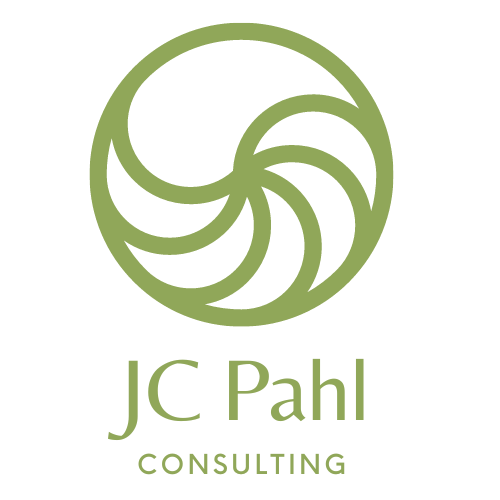How Yoga Studios Can Use Mindbody to Track Referrals and Optimize Client Acquisition
In today’s competitive wellness market, referrals remain one of the most effective — and cost-efficient — ways to grow your yoga studio. Yet most owners aren’t using their Mindbody software to track referral data effectively, measure acquisition costs, and make informed marketing decisions.
Here’s a step-by-step guide from a business consultant’s perspective on how to track, analyze, and use referral data to improve your marketing ROI.
1. Setting Up Referral Tracking in Mindbody
Mindbody makes it possible to collect referral information both manually and automatically — but it requires the right setup.
A. Collecting Referral Data at Sign-Up
Client Intake Form: Add a required field called “How did you hear about us?” with options like:
Friend/Family Referral (consider layering in a current client referral program)
Google Search
Instagram
Facebook
Walk-In
Other (with a text field)
Front Desk Training: Staff should always ask in a natural way:
“Welcome! We love to know how people find us — was it through a friend, online, or something else?” AND … remind them to be SURE this answer is selected in the client’s Mindbody profile.Automated Offers: If you run a “Refer-a-Friend” program, ensure the referring client’s name is entered in the Referred By field in Mindbody.
B. Using the “Referred By” Field
Each new client profile should have the Referred By field filled in — whether it’s another client, a business, or a campaign.
Use consistent naming conventions (e.g., "Google Search", not sometimes "Google" and sometimes "Search Google") so reporting is accurate.
2. Running Referral Reports in Mindbody
Mindbody has multiple ways to pull referral data, but the Client Acquisition Report is your primary tool.
To run it:
Go to Reports → Clients → Client Acquisition.
Select your date range (e.g., last month, last quarter).
Filter by Acquisition Source or Referred By.
Export to Excel or CSV for deeper analysis.
Other useful reports:
New Client Report — shows all first-time visits within a given timeframe.
Sales by Acquisition Source — connects referral source to actual revenue.
Attendance by Acquisition Source — shows retention and visit frequency by source.
3. Calculating Cost of Acquisition (CAC)
CAC helps you understand how much you’re spending to gain each new client from each channel.
Formula:
CAC=Total Marketing Spend for PeriodNumber of New Clients Acquired in That PeriodCAC=Number of New Clients Acquired in That PeriodTotal Marketing Spend for Period
Example:
Facebook/Instagram Ads Spend: $1,200/month
New Clients from Ads: 24
CAC = $1,200 ÷ 24 = $50 per client
Why this matters:
If your intro offer is $49, and your average CAC from Instagram is $50, you’re breaking even on the first purchase — meaning you must rely on upsells, memberships, and retention to profit.
4. Using Your Data to Improve Marketing
Once you’re tracking referrals consistently, patterns emerge:
If referrals from friends convert better → Focus on enhancing your referral program (e.g., “Bring a Friend Free Week” or “Both Get $25 Credit”).
If Google Search drives high-value clients → Invest more in SEO and Google Ads.
If Instagram ads bring traffic but low retention → Reevaluate your targeting and messaging.
5. Questions to Ask Every New Client
To keep referral tracking accurate, standardize your intake process. Ask:
How did you hear about us? (with options to choose)
Was there a specific ad, event, or person who encouraged you to try us?
Have you practiced yoga before? (helps with messaging later)
6. Deciding Where to Advertise
Use your referral reports to choose advertising platforms strategically:
High-value, high-retention sources → Increase ad spend here. Perhaps a great place to feature teacher training or retreats.
Low-value or high-CAC sources → Reduce spend or change approach.
Untapped sources → Test small budgets on new platforms or partnerships.
Ideas for advertising:
Partner with local wellness businesses for cross-promotions.
Sponsor community events where your ideal clients are present.
Run geo-targeted Google Ads for “Yoga near me.”
Test Meta Ads with retargeting to people who visited your website but didn’t purchase.
Go OLD SCHOOL LOW TECH with yard signs.
7. Using Referral Reports for Google & Meta Ads
How to connect the dots:
Pull your Client Acquisition Report to see which ad platforms brought the most profitable clients.
Compare revenue from each source to your ad spend for the same period.
Shift budgets toward campaigns with the lowest CAC and highest lifetime value (LTV).
Example:
Google Ads CAC: $38, Average LTV: $720 → Keep & scale budget.
Meta Ads CAC: $65, Average LTV: $250 → Pause or re-target with a better offer.
8. Key Takeaways for Studio Owners
Data discipline wins. Train your staff and yourself to capture referral data every time.
CAC tells the truth. It’s the clearest way to know if your marketing is worth it.
Let reports guide you. Don’t guess where to spend — let your Mindbody data point you in the right direction.
Test & adjust. Marketing isn’t “set it and forget it.” Review your reports monthly and adapt.
By treating referral tracking not as an afterthought but as a core business process, your yoga studio can make smarter marketing decisions, reduce wasteful spending, and create a client acquisition system that’s both predictable and profitable.
